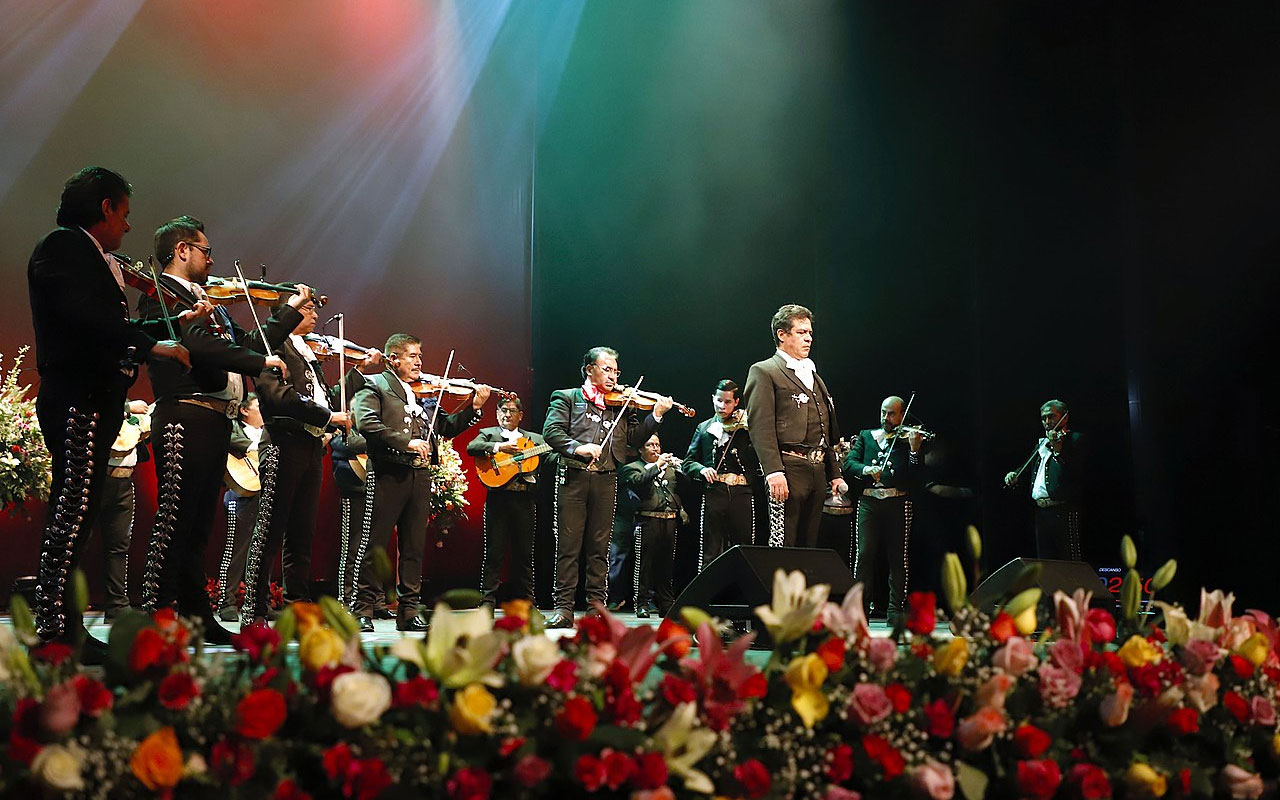
The artists have come to Uvalde to mourn the dead with paint and music.
There were the dozens of mariachi musicians that met in a parking lot in San Antonio with their trumpets, violins, saxophones, small five-string vihuelas, and guitarrónes Mexicanos. They traveled in the famous and striking white and black clothes of their craft.
There was the Dallas-based artist Roberto Marquez, who traveled to Uvalde to paint a mural inspired by Pablo Picasso’s famous 1937 masterpiece, “Guernica,” which was created in response to the German bombing of the Spanish town of Guernica. Marquez told Hyperallergic, a popular online arts magazine, that he views his paintings as a form of journalism, one which calls attention to tragedy but also helps people heal.
“I’m bringing the tragedy to the canvas,” Marquez said. “When a painter comes in, it’s part of the healing. I’m a strong believer that no matter how difficult it is, we can help to relieve, to make it easier for people to manage.”
The arts magazine reported that three other murals were painted in Uvalde this past weekend alone. One was done by the Austin, Texas painter Kimie Flores, who is from Uvalde, and returned to paint a mural on a wall near the high school’s football stadium. It features a mother coyote and her pup below a night sky dotted by 21 stars, one for each victim of the Uvalde massacre—19 students and their two teachers.
And then there is the story which has gone around the world, of Trey Ganem, who runs a custom casket business in Edna, Texas, called SoulShine Industries. When he learned of the shooting at Robb Elementary School in Uvalde, he and his 25-year-old son, Billy, who helps run the business, slipped into action. The small children’s caskets came on short notice from the Cherokee Casket Company in Griffin, Georgia, and were hauled by a trucker named Bubba Hoffman to Ganem’s shop in Texas. He and his son worked through the night.
Ganem ended up meeting with the families of every single one of the victims in an attempt to learn about their children’s likes and loves. “Being able to go to the homes is something that is very emotional for me,” Ganem told CBS News. “It is not a box anymore. It is a beautiful creation that represents the loved ones.”
“We’re here to try to make a hard time a little easier,” Ganem’s son Billy told BuzzFeed News. “There’s nothing we can really ever do to make it easier, but that’s our goal: to help the families…start their grieving and their healing and just try to make something special for them.”
And there is also the more spontaneous art and music, which has popped up not just in Uvalde but across the nation, an attempt to remember and honor the victims of the shooting and bring some sense of peace and beauty to those who are grieving.
“Music creates a legitimate space to grieve, especially when words may be impossible, and it can also allow you to connect and feel with others in grief,” reads a website devoted to songs of loss and healing. “Giving such space to our emotions allows us to process them and eventually tame what’s initially overwhelming.”
Art, whether we think about it or not, is a component of nearly every part of the grieving process and the funeral itself. From the choice of casket or urn to the manner of burial, to the dress of the bereaved, and the items some people choose to send along with their loved ones to the afterlife. Digital Dying has canvassed this topic extensively. We have written about the importance of funeral music in honoring the deceased, we have interviewed a New Orleans bagpiper who plays at funerals and hospices, and we have explored a wide range of ideas on how to make funerals more personal and artful, and musical.
Back in the village square in Uvalde, the mariachis continue their charged and doleful songs. “There’s a pride in this music — it’s ours,” Anthony Medrano, one of the mariachi performers who helped organize the trip to Uvalde, told the New York Times. “We as mariachis are there for every part of a person’s life. We’re called to step up and step in — and help comfort families and help comfort the community. That’s what we’re going to do today.”
He added that mariachi songs “don’t pet you, they cut you.” Mariachi allows the musicians to convey an array of emotions, even within a single song: joy, pride, love, yearning, and sadness. While mariachi musicians often play at quinceañeras, weddings, anniversaries, and birthdays, they are no strangers to funerals and memorial ceremonies too.
“We have played so many funerals,” said Sandra Gonzalez, a nurse in a newborn intensive care unit and another one of the mariachi musicians who traveled to Uvalde. She was referring to the funerals the mariachis were called to play during the coronavirus pandemic.
As art and music help Uvalde grieve and help bring humanity and beauty back to the community, there is also, sadly, the art that will never be. The Associated Press reported a story about ten-year-old Alithia Ramirez, who was killed in the shooting and loved to draw.
“She was very reliable, always wanted to take care of everyone, and was a role model to her siblings,” her obituary read. An “extremely loving young lady,” Alithia had “dreamt of attending Art School in Paris.”









